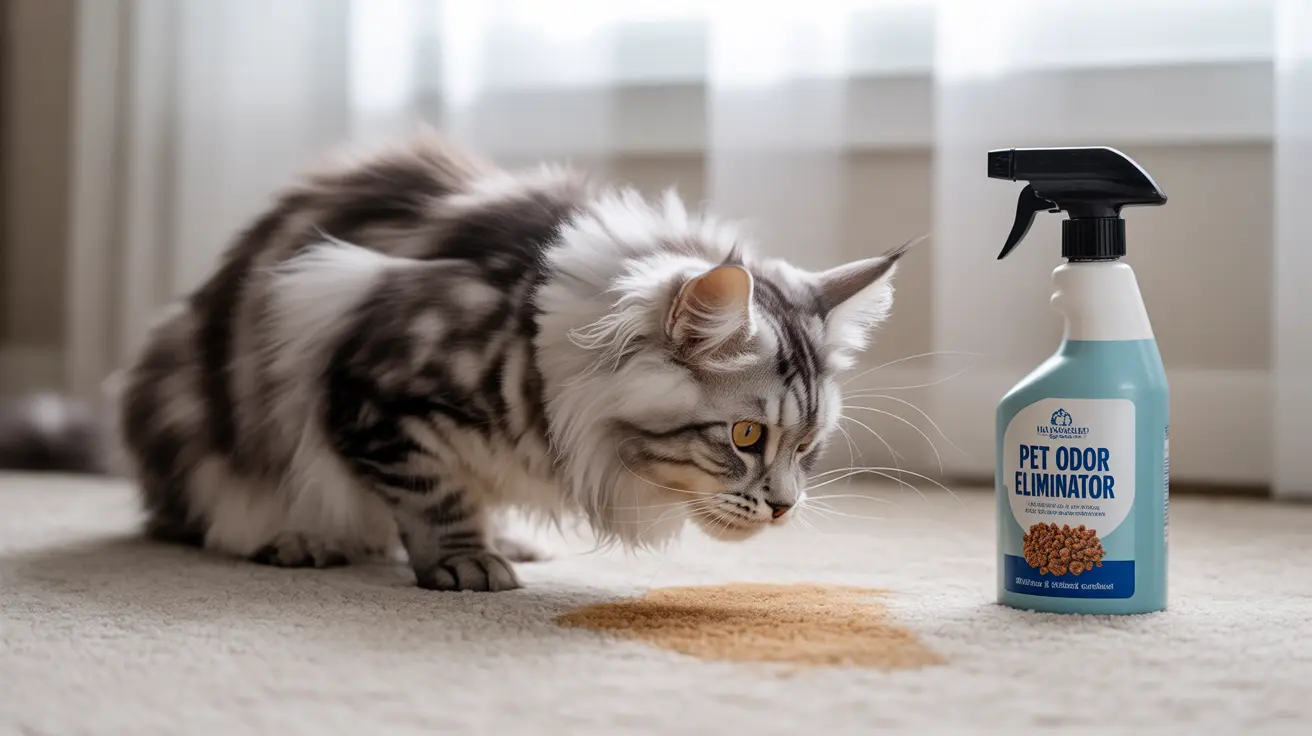Discovering cat urine on your furniture or floors can be distressing, but with the right approach and products, you can effectively eliminate both the stain and smell. This comprehensive guide will walk you through proven methods to remove cat pee odor and prevent future incidents.
Understanding why cat urine smells so persistent is key to treating it effectively. Cat urine contains unique compounds including uric acid crystals that can reactivate when exposed to moisture, making traditional cleaning methods ineffective.
The Science Behind Cat Urine Odor
Cat urine is particularly challenging to eliminate because it contains uric acid crystals that bind deeply to surfaces. When these crystals dry, they can remain dormant until reactivated by humidity or moisture, releasing that unmistakable ammonia-like smell all over again.
Additionally, bacteria in the urine break down and create strong-smelling compounds that can persist long after the initial accident. This is why simply masking the odor with air fresheners or standard cleaners rarely works.
Immediate Action Steps
The moment you discover fresh cat urine, take these critical steps:
- Blot the area thoroughly with paper towels or clean cloth
- Avoid rubbing, which can push the urine deeper into materials
- Remove any removable covers or cushions
- Keep your cat away from the affected area
Using Enzymatic Cleaners Effectively
Enzymatic cleaners are your best weapon against cat urine odor. These specially formulated solutions contain beneficial bacteria and enzymes that actually break down the uric acid crystals and proteins in cat urine.
For best results:
- Saturate the area completely, ensuring the solution reaches as deep as the urine penetrated
- Allow the enzymatic cleaner to sit for at least 15 minutes
- For deep stains, cover the area with plastic wrap to prevent evaporation
- Let the area dry completely (24-48 hours) before assessing results
Treating Different Surfaces
Upholstery and Couches
For furniture, remove cushion covers if possible and treat both the fabric and underlying foam. If covers aren't removable, saturate the affected area thoroughly with enzymatic cleaner and allow extended drying time.
Carpets and Rugs
Use a black light to locate all affected areas, then treat with enzymatic cleaner beyond the visible stain. For serious cases, consider using a carpet cleaning machine with an enzyme-based solution.
Hard Surfaces
Clean sealed surfaces with enzymatic cleaner according to product instructions. For unsealed wood, you may need professional intervention to prevent damage.
Prevention Strategies
To prevent future incidents:
- Keep litter boxes clean and easily accessible
- Address any underlying health or behavioral issues with your veterinarian
- Use deterrent sprays in previously soiled areas
- Consider additional litter boxes (the rule of thumb is one per cat plus one extra)
Frequently Asked Questions
How do enzymatic cleaners work to remove cat pee smell permanently?
Enzymatic cleaners contain special proteins that break down the uric acid crystals and bacteria in cat urine. These enzymes continue working until the organic matter is completely eliminated, providing permanent odor removal when used correctly.
What is the best way to clean fresh cat urine from carpets and upholstery?
Immediately blot up as much urine as possible with paper towels or cloth. Then thoroughly saturate the area with an enzymatic cleaner, ensuring it penetrates as deeply as the urine did. Allow the area to air dry completely for 24-48 hours.
Can I use vinegar or hydrogen peroxide to neutralize cat urine odor safely?
While vinegar and hydrogen peroxide can help neutralize odors temporarily, they don't break down the uric acid crystals that cause persistent smells. Use these as preliminary treatments only, followed by enzymatic cleaners for permanent results.
Why should I avoid ammonia-based cleaners when removing cat pee smell?
Ammonia-based cleaners should be avoided because they smell similar to cat urine and may actually attract your cat to re-mark the same spot. Additionally, these cleaners can set stains and make the odor more difficult to remove.
How can I remove cat urine odor from deep cushions and foam inside furniture?
For deep cushions and foam, thoroughly saturate with enzymatic cleaner, ensuring it reaches all affected areas. Remove covers if possible and treat foam directly. Allow extended drying time (48-72 hours) with good air circulation to prevent mildew.
Conclusion
While removing cat urine odor requires patience and the right approach, it's absolutely achievable with proper techniques and products. Remember that thorough cleaning not only eliminates odors but also helps prevent future accidents by removing scent markers that might attract your cat back to the same spot.






